In honour of the grand national today, a guide to horse colours! r/coolguides
The dazzling array of horse coat colors originates from just two primary pigments: black and red. From these, four fundamental colors emerge: black, gray, bay, and chestnut. The various shades we observe stem from the interplay—or occasionally, the absence—of these pigments, creating a wide spectrum of beautiful colors.

Chestnuts Équin, Cheval, Illustrations
FAQ. Q: Where is the color Brown? A: Brown (and I'm not referring to Seal Brown) is a somewhat ambiguous term used to identify a number of horse coat colors but most often refers to a dark variation of Bay. As the genetics behind the variations of the Bay base color become more understood, we will try to make changes to the calculator that will incorporate these variations.

Iowa Grognard Horse Color Charts
White is a very rare horse color, and as a matter of fact, most white horses tend to be grays with a white hair coat. Although some can have blue eyes, a pure, white-coated horse features snow-white hair, pink skin, and brown eyes. These horses are born white and remain that way for the rest of their lives. 14.
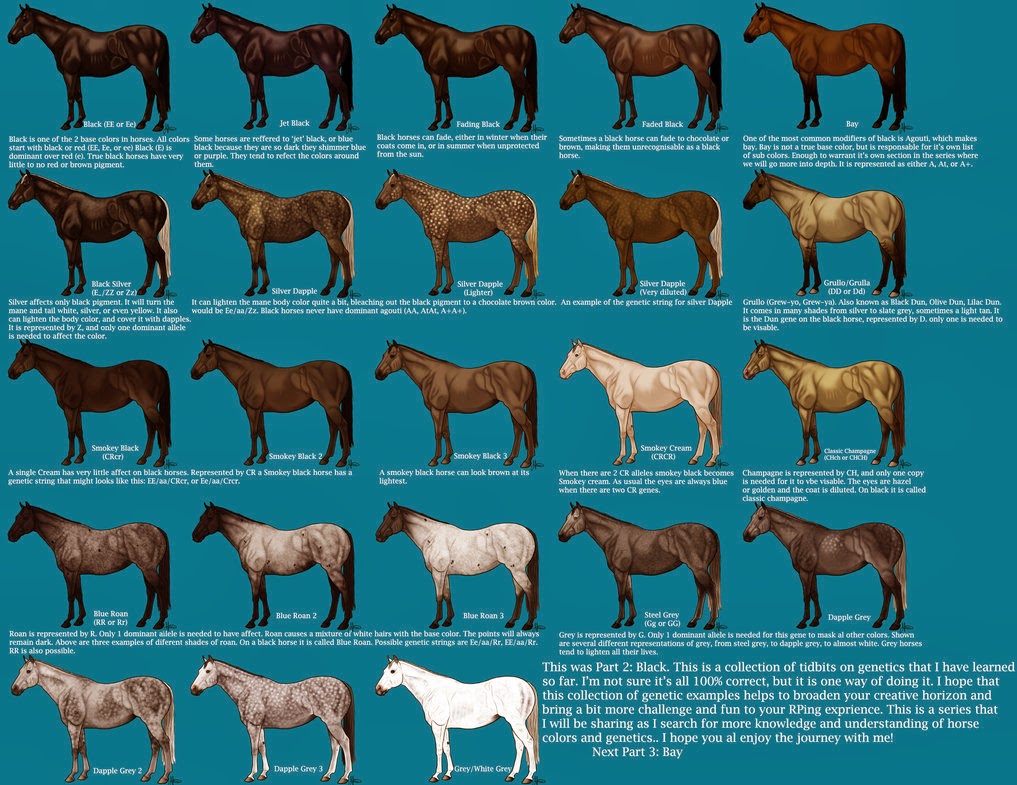
Iowa Grognard Horse Color Charts
The coat is a pale smoky brown color with the points of the horse a darker color of the horse's body. Classic champagne horses are born with blue eyes which turn to an amber or hazel color after around 3 months and their skin is a pinkish color. Classic champagne horses sometimes get confused for grullos or buckskins.
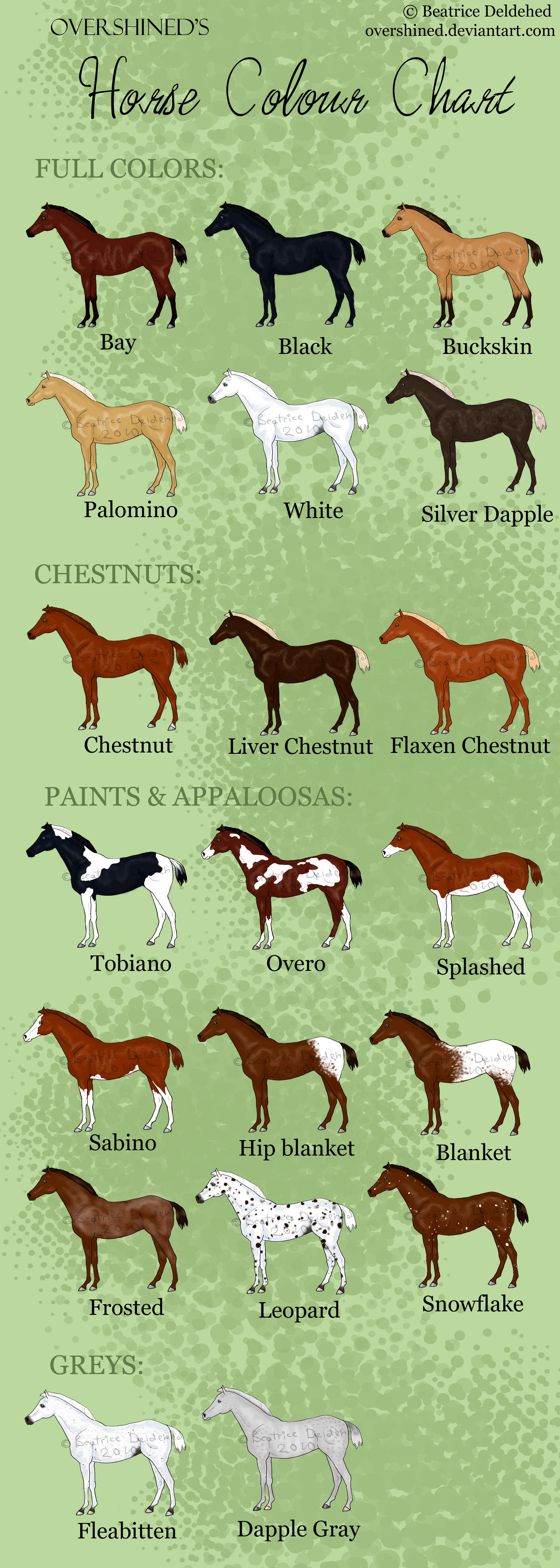
Horse Colour Chart by overshined on DeviantArt
Horses come in a variety of vivid coat colors, ranging from solid and static to multifaceted and ever-changing. These coat colors are controlled by complex genetics. Here, we showcase some common.
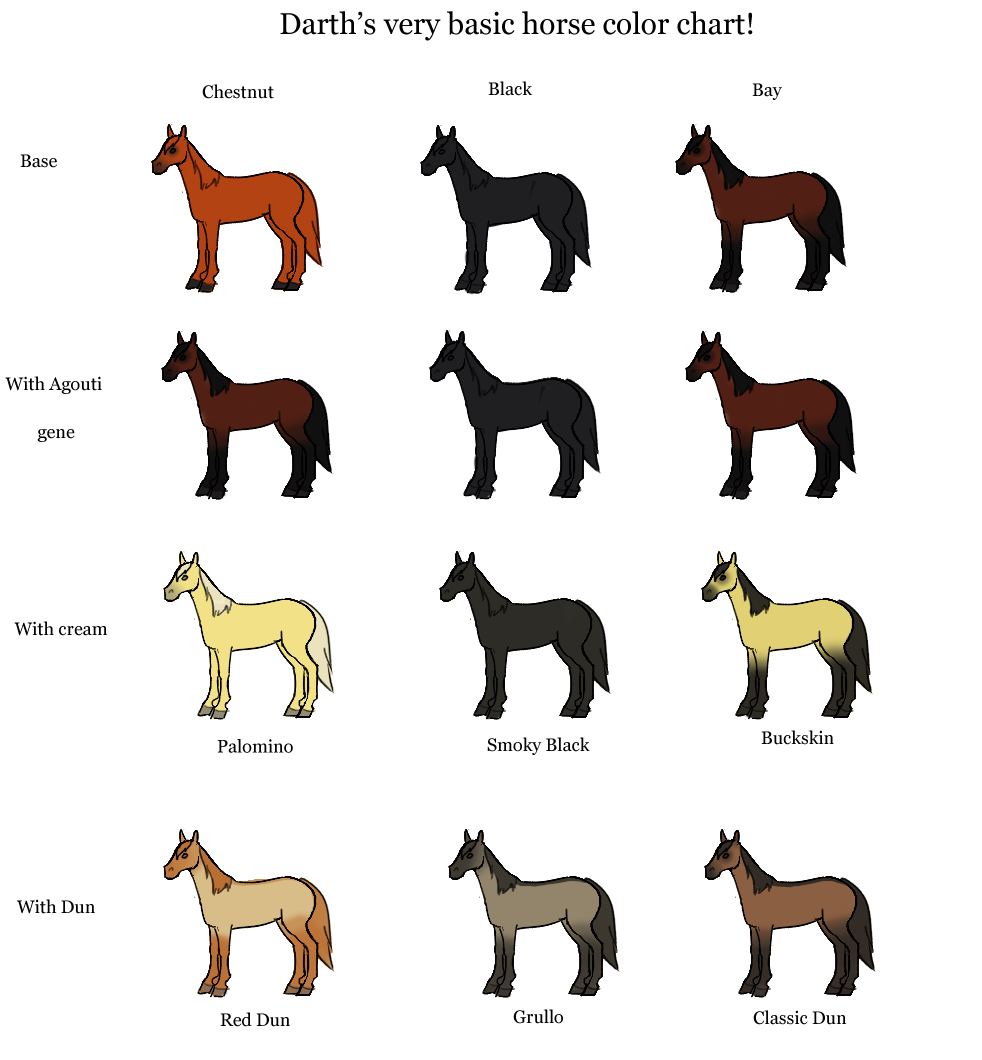
The Jorvik Report Horse color chart
Equine Coat Color Genetics Base Coat Color. The basic coat colors of horses include chestnut, bay, and black. These are controlled by the interaction between two genes: Melanocortin 1 Receptor (MC1R) and Agouti Signaling Protein (ASIP).. MC1R, which has also been referred to as the extension or red factor locus, controls the production of red and black pigment.
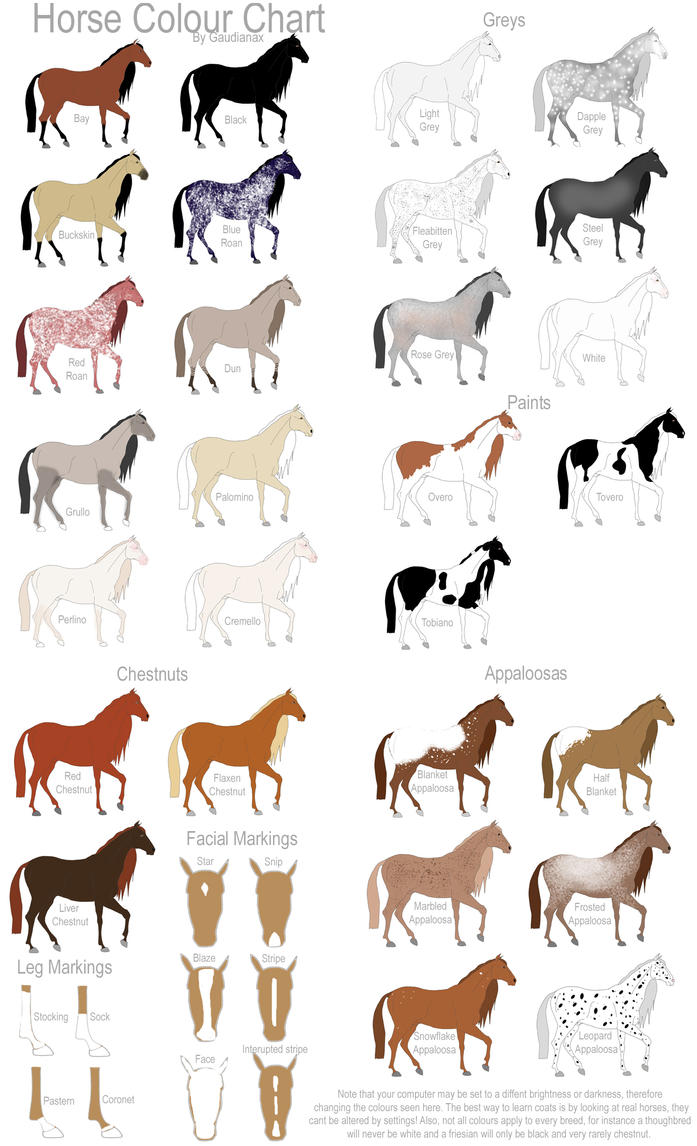
Horse Colour Chart by Gaurdianax on DeviantArt
15. Silver Dapple. 16. Smoky Black. 17. Smoky Cream. 18. White. The coat color of horses is determined by genetics, and changes in genes are responsible for different colors and variations.

Horse Colour Chart by Gaurdianax on DeviantArt
Winning Colors. Use this chart to help determine which colors are especially flattering on your horse. Find your horse's primary coat color on the chart (redhead, brunette or neutral) then consider colors in the suggested ranges. For Appaloosas, Paints, Pintos and other horses with more than 50% body white, we suggest the colors on the bottom.

Horse color chart stock illustration Horse color chart, Horse coat colors, Horse coloring
The AMHA also recognizes horses with color patterns such as pinto, appaloosa and pintaloosa's. Each of these colors have variations which are also available for notation on registration forms. If you would like help identifying your horse's color, please contact us at 817.783.5600 or email us. PLEASE NOTE: The photos and descriptions below do.

howtodrawhorseshorsecoatcolorschart Horse coat colors, Horse drawings, Draw horses
No matter what you love, you'll find it here. Search Horse d d and more. We've got your back with eBay money-back guarantee. Enjoy Horse d d you can trust.

American Quarter Horse Color Chart Horse breeds, Horse color chart, Quarter horse
Particularly light-colored horses in this shade can resemble cremellos, but the amber eyes tell the true story. Amber champagne (genetically bay): gold body; chocolate mane, tail and legs. Champagne (genetically black): khaki-colored body that can have almost greenish highlights; mane, tail and legs are chocolate.

Horse Colours and Patterns Horse coloring, Horse coat colors, Horse color chart
Many equine colors and markings exist in the world today, with countless shades and combinations that make every horse unique. The most common horse colors and patterns are bay, chestnut, gray, black, pinto, and dun. A horse's color is determined by many factors such as breed, genetics, age, and even season.
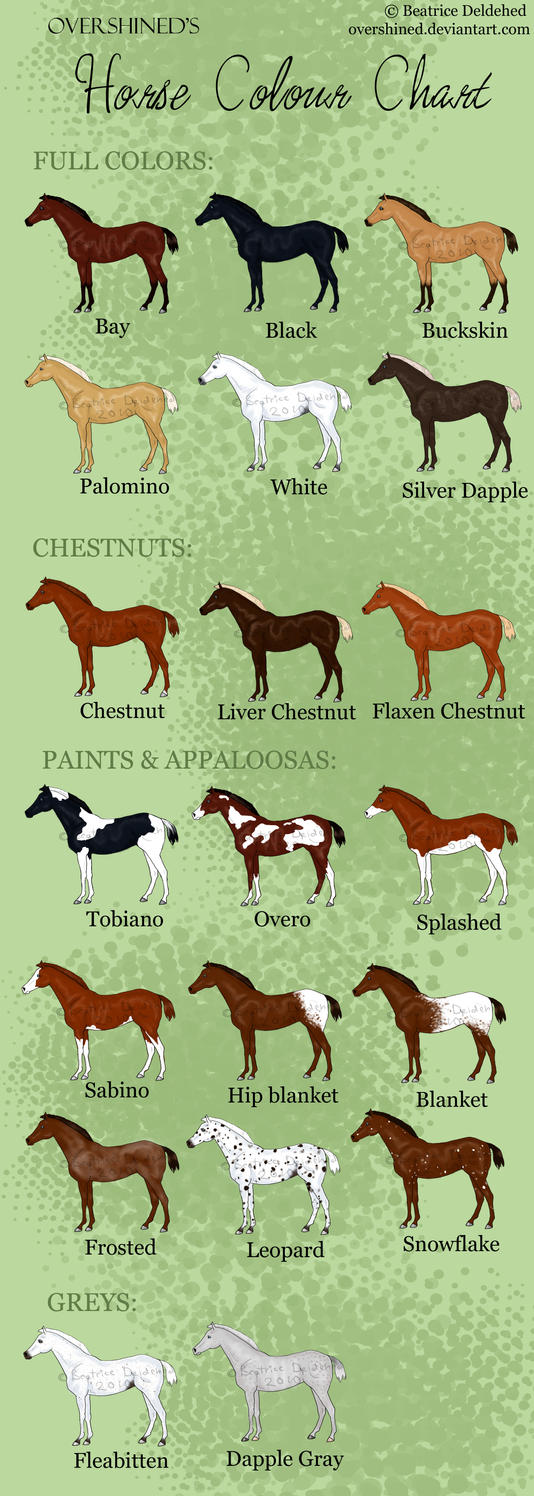
Horse Colour Chart by overshined on DeviantArt
Basic coat colors Bay (left) and chestnut (right) mustangs. The two basic pigment colors of horse hairs are pheomelanin ("red") which produces a reddish brown color, and eumelanin, which produces black.These two hair pigment genes create two base colors: chestnut, which is fully red, and black, which is fully black. All other coat colors are created by additional genes that modify these two.
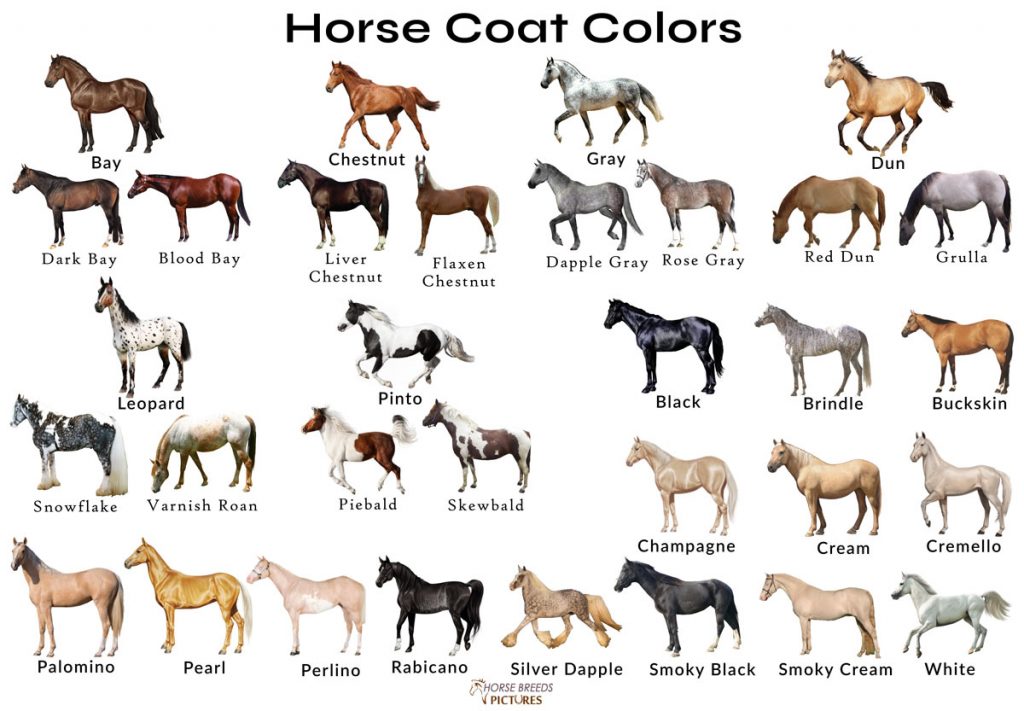
Different Horse Colors with Pictures
Step 3: Color Modifiers. Once you've identified a horse's base color (black or red) and whether or not it carries the agouti gene, the next step is to identify another color modifier that is in action to create the horse's color. Color modifiers include: Gray - A dominant gene that will ultimately turn any base horse color gray.

Part 3 Bay by MagicWindsStables on deviantART Horse color chart, Horse coloring, Horses
These combine to form four main coat colors: black, gray, bay, and chestnut. The mixing (or lack) of pigments creates a wide range of coat colors. Some colors, like Paint and Appaloosa, are also horse breeds. Horses can also have a range of black points (manes, tails, socks, stockings) and white markings, like stars or stripes.
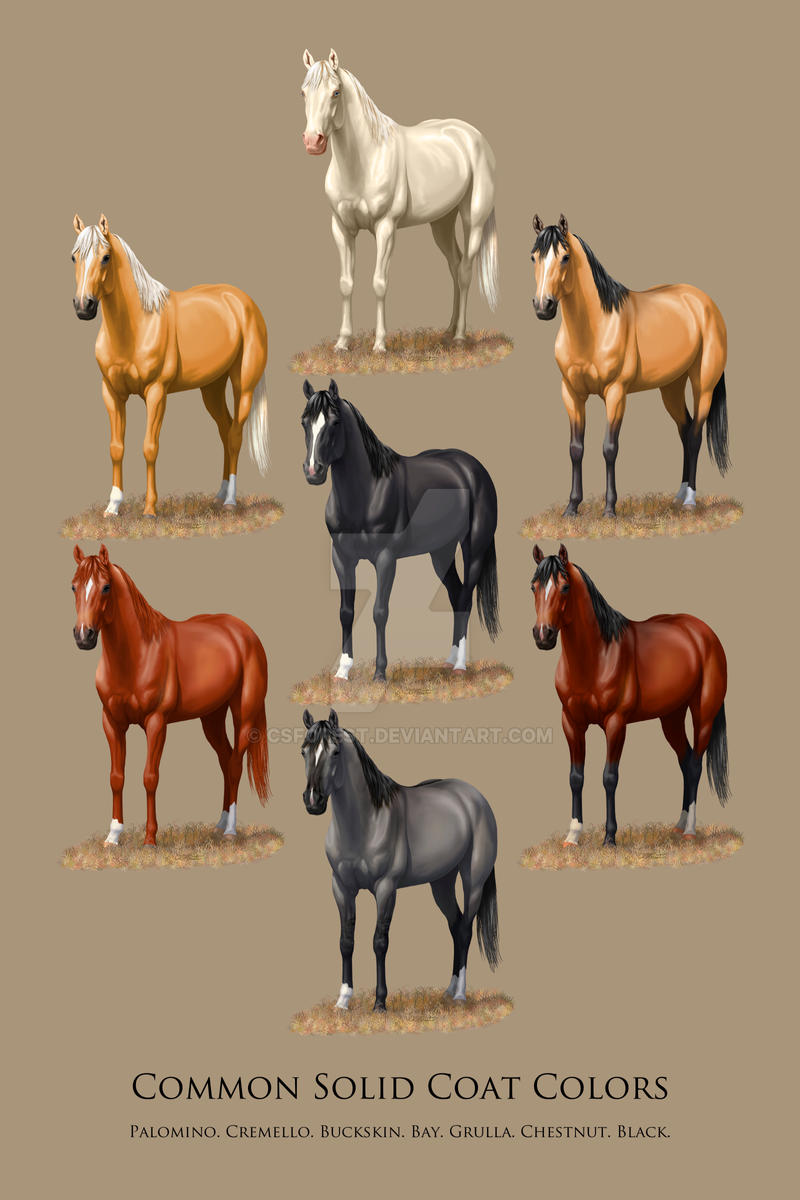
Horse Common Solid Coat Colors Chart by CSForest on DeviantArt
5. White. There are many types of horses with unique and beautiful coats, but a true white is very rare. As a matter of fact, the majority of white horses tend to be grays with a white hair coat. A pure white horse will have snow-white hair along with pink skin and brown eyes (though some can have blue eyes).